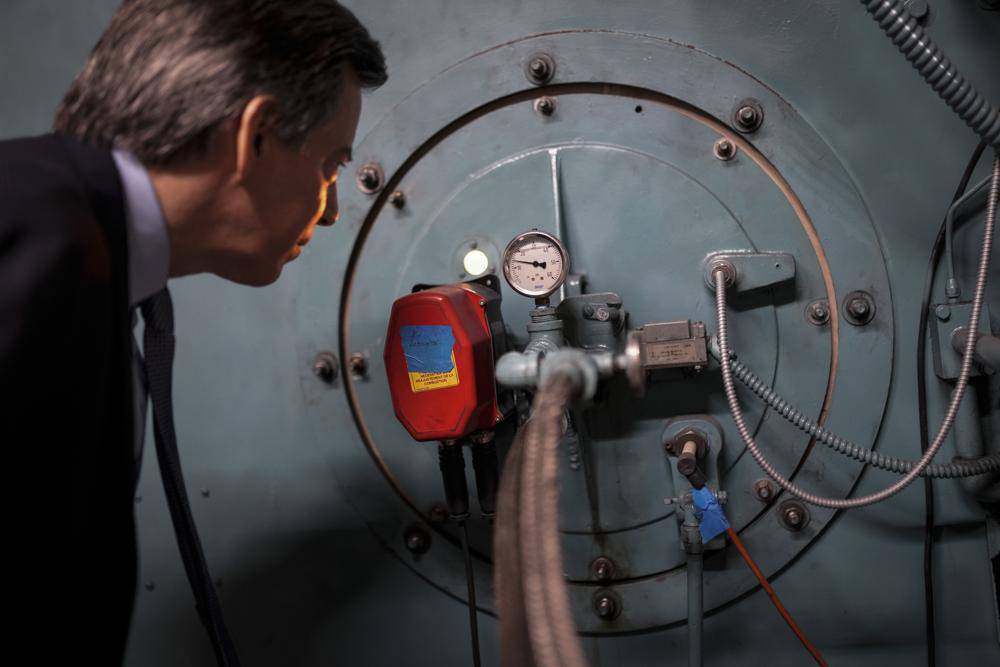|
Getting your Trinity Audio player ready...
|
By: Cathy Bussewitz
From the outside, the residential high-rise on Manhattan’s Upper West Side looks pretty much like any other luxury building: A doorman greets visitors in a spacious lobby adorned with tapestry and marble.
Yet just below in the basement is an unusual set of equipment that no other building in New York City — indeed few in the world — can claim. In an effort to drastically reduce the 30-story building’s emissions, the owners have installed a maze of twisting pipes and tanks that collect carbon dioxide from the massive, gas-fired boilers in the basement before it goes to the chimney and is released into the air.
The goal is to stop that climate-warming gas from entering the atmosphere. And there’s a dire need for reducing emissions from skyscrapers like these in such a vertical city. Buildings are by far the largest source of greenhouse gas emissions here, roughly two-thirds, according to the city buildings department.
New York state’s buildings also emit more air pollution than any other state’s.
So building owners must make dramatic cuts starting next year or face escalating fines under a new city law. About 50,000 structures — more than half the buildings in the city, are subject to Local Law 97. Other cities such as Boston and Denver followed suit with similar rules.
As a result, property managers are scrambling to change how their buildings operate. Some are installing carbon capture systems, which strip out carbon dioxide, direct it into tanks and prepare it for sale to other companies to make carbonated beverages, soap or concrete.
They see it as a way to meet emissions goals without having to relocate residents for extensive renovations. In this case, the carbon dioxide is sold to a concrete manufacturer in Brooklyn, where it’s turned into a mineral and permanently embedded in concrete.
“We think the problem is reducing emissions as quickly as possible,” said Brian Asparro, chief operating officer of CarbonQuest, which built the system. “Time is not on our side, and this type of solution can be installed quickly, cost-effectively and without a major disruption.”
Yet critics, many of them representing environmental groups, say building managers should be going much further: They argue that to achieve meaningful reductions in emissions, buildings should be significantly upgraded and switched to renewable-powered electricity instead of continuing to burn fossil fuels. They also express concerns about the safety of storing large amounts of carbon dioxide, an asphyxiant, in a densely populated community.
“Carbon capture doesn’t actually reduce emissions; it seeks to put them somewhere else,” said Anthony Rogers-Wright, director of environmental justice at New York Lawyers for the Public Interest. “The emissions still exist. And we should be clear that the only way to reduce emissions … is to stop emitting.”
It’s still unclear whether carbon capture technology will even be recognized by New York City as a qualifying emissions reduction; the city has yet to decide. Asparro and others are trying to persuade city officials to accept it.
In the basement of the Upper West Side apartment building, two hulking 500-horsepower boilers rumble, burning natural gas and releasing carbon dioxide. The boilers, which are expected to last another 10 or 20 years, produce roughly half the building’s emissions, Asparro said.
The other half of the emissions that, in the city’s view, the building is responsible for, are those generated at the power plants where the building gets its electricity. The carbon capture system, Asparro said, is trapping about 60% of the boilers’ emissions.
(AP)





